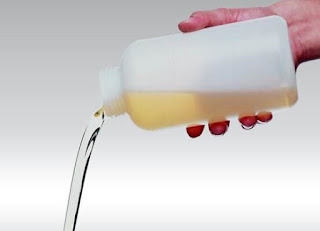Polyurethane Prepolymer Market Outlook: Emerging Technologies and Market Disruptions
Polyurethane
prepolymers are an important type of raw material that serve as building blocks
for a variety of polyurethane products. They are formed by reacting
diisocyanates with polyols to produce polymers with isocyanate groups on the
ends of the molecular chains. These isocyanate groups allow the prepolymers to
further react and form crosslinked networks. Due to this property, polyurethane
prepolymers are very versatile and are used in applications ranging from
coatings to sealants to adhesives to elastomers and more.
Types of Polyurethane Prepolymers
Polyurethane prepolymers can be broadly classified into two main categories
based on the type of diisocyanate used in their synthesis:
- MDI (Methylene Diphenyl Diisocyanate) based prepolymers: MDI is a widely used
aromatic diisocyanate that produces hard yet durable prepolymers. They have
excellent heat and chemical resistance but are more brittle compared to other
types. Common applications include rigid and semi-rigid foams for insulation.
- TDI (Toluene Diisocyanate) based prepolymers: Being aliphatic in nature, TDI
based prepolymers are softer and more flexible than MDI ones. They have good
abrasion resistance and flexibility over a wide temperature range. Common uses
include flexible foams, elastomers, coatings and adhesives.
Within these two broad categories, the properties can further vary based on the
type of polyols like polyether polyols or polyester polyols used. Hybrid prepolymers
combining features of MDI and TDI are also commercially produced.
Manufacturing of Polyurethane Prepolymers
The manufacturing process primarily involves a reaction between the
diisocyanate and polyols in the presence of a catalyst. Carefully controlling
the ratios of inputs and reaction conditions is crucial to obtaining the
desired prepolymer. Here are the basic steps:
- Weighing and mixing: The diisocyanate and polyols are precisely weighed and
mixed in a reaction vessel as per stoichiometric ratios.
- Heating and catalysis: A metal-based catalyst is added to initiate the
exothermic urethane reaction between the isocyanate and hydroxyl groups. The
mixture is heated to 60-90°C to allow complete reaction.
- Degassing: Trapped gases are removed under vacuum to obtain a bubble-free
product. This degassing step also aids the completion of the reaction.
- Cooling: The reaction mixture is then allowed to cool, resulting in a viscous
liquid prepolymer with isocyanate end groups.
- Quality checks: Samples are tested for properties like isocyanate content and
viscosity to ensure the prepolymer meets specifications.
Some large scale commercial processes also employ continuous reactors for
improved efficiency. Strict quality control is vital as even minor variations
can impact the final polyurethane products.
Utilization of Polyurethane Prepolymers
The presence of reactive isocyanate groups in polyurethane prepolymers allows
for their utilization in various applications through further crosslinking reactions:
Coatings: When mixed with curatives, prepolymers form durable coatings for
wood, metal, plastics etc. Properties like adhesion, gloss, hardness can be
tailored.
Elastomers: By extending prepolymers with extenders and curing, elastic
polyurethane products like tires, hoses, belts are made.
Adhesives and Sealants: Curing prepolymer pastes forms high strength bonds
useful for construction and automotive applications.
Foams: Through reaction and blowing agents, prepolymers give versatile flexible
and rigid foams for insulation, cushioning, packaging etc.
Fibers and Textiles: Spun prepolymer solutions create fibers for carpeting,
clothing and many technical textiles.
Thus, with their versatile reactivity profiles, polyurethane prepolymers serve
as crucial intermediates to manufacture an amazing variety of commercial
polyurethane products offering unique benefits. Their use will certainly
further expand in the future.
Conclusion
In this article, we discussed what polyurethane prepolymers are, how they are
classified and manufactured, and their diverse applications through further
crosslinking reactions. As a key building block, prepolymers allow production
of tailored polyurethane materials offering properties like strength,
flexibility, adhesion and more. With ease of production and utilization,
prepolymers will remain an important raw material base driving innovations
across multiple industries. Continuous advancements in synthesis methods will
also help enhance their performance characteristics.



.png)
Comments
Post a Comment